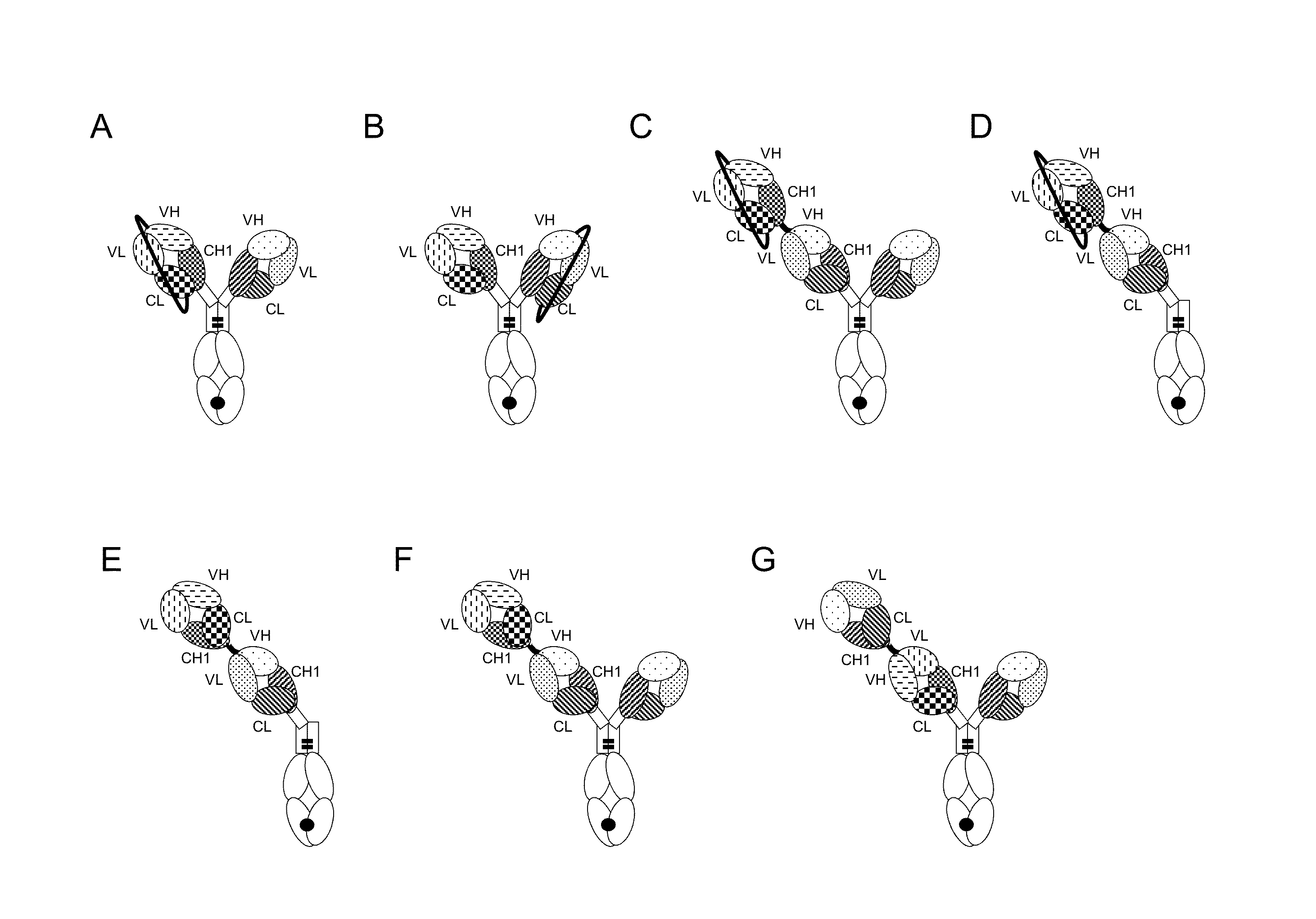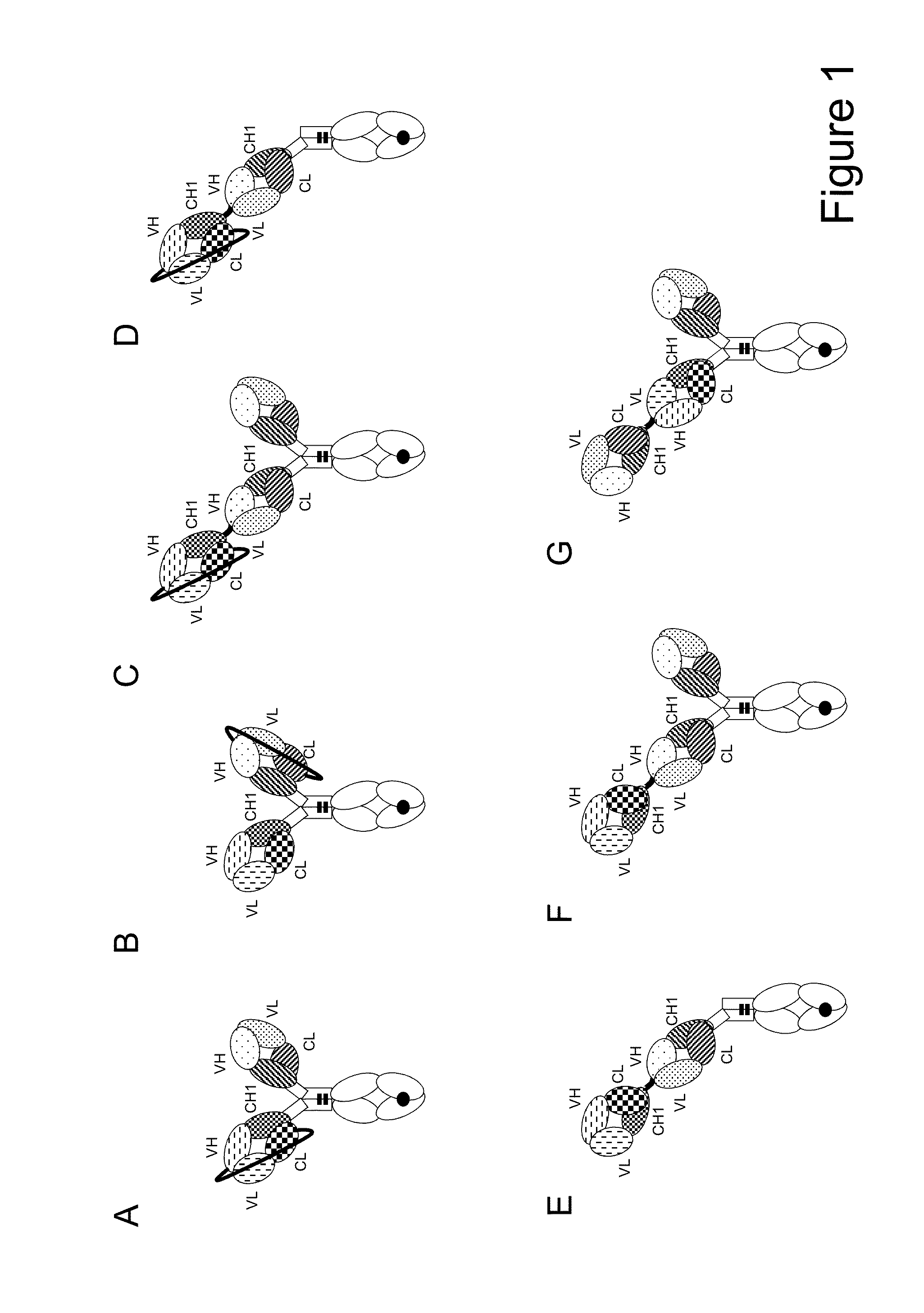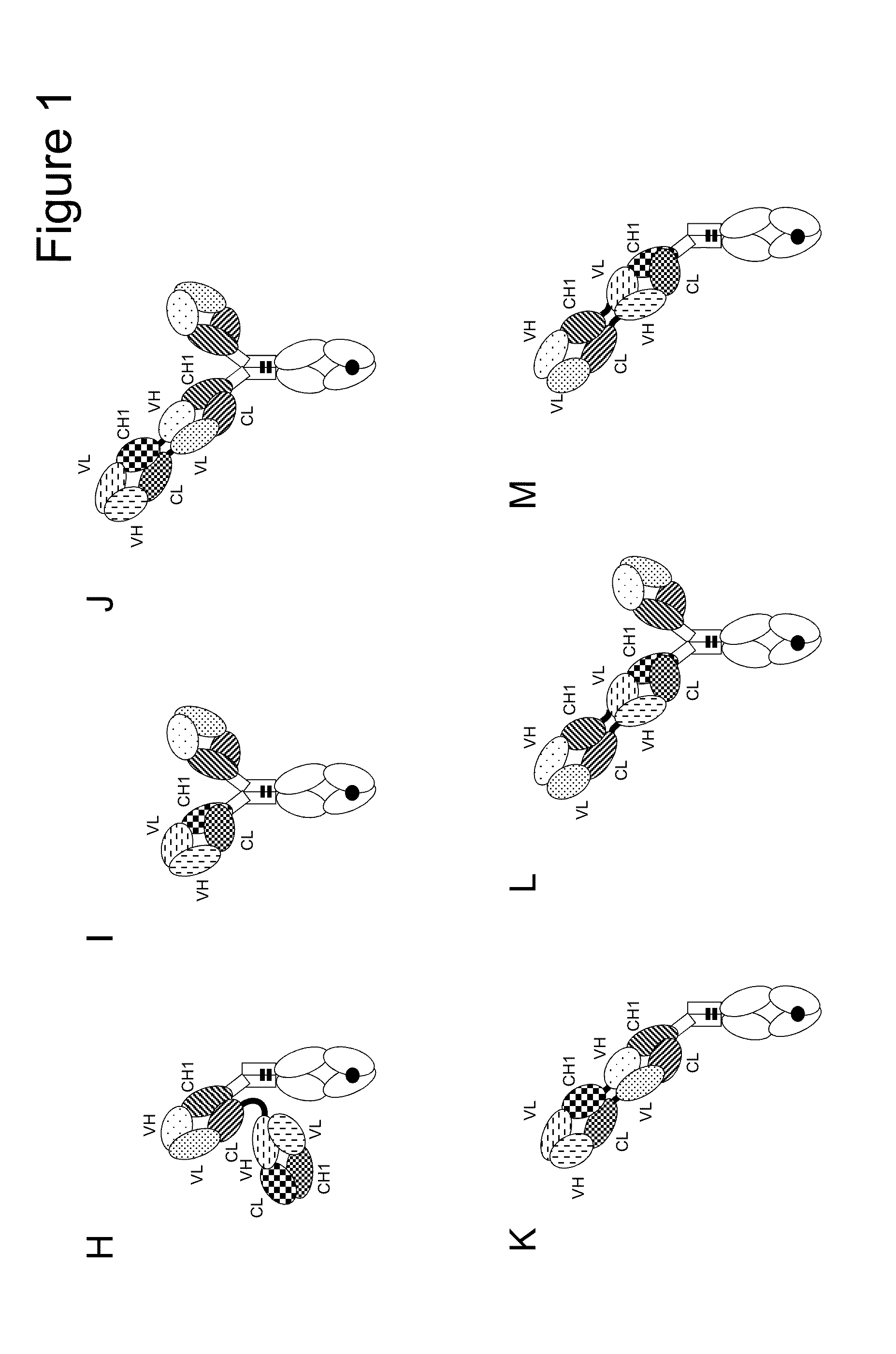Bispecific t cell activating antigen binding molecules
a technology of binding molecules and t cells, applied in the direction of fused cells, antibody medical ingredients, drug compositions, etc., can solve the problems of igg-like formats, unable to activate the effector mechanism mediated by the fc domain, and suffer from the toxicity of the native effector functions inherent in igg molecules, so as to reduce the binding affinity of an fc receptor, reduce the effector function, and reduce the binding affinity to an fc receptor
- Summary
- Abstract
- Description
- Claims
- Application Information
AI Technical Summary
Benefits of technology
Problems solved by technology
Method used
Image
Examples
example 1
Preparation, Purification and Characterization of Bispecific Antigen Binding Molecules
[0292]The heavy and light chain variable region sequences were subcloned in frame with either the constant heavy chain or the constant light chain pre-inserted into the respective recipient mammalian expression vector. The antibody expression was driven by an MPSV promoter and a synthetic polyA signal sequence is located at the 3′ end of the CDS. In addition each vector contained an EBV OriP sequence.
[0293]The molecules were produced by co-transfecting HEK293 EBNA cells with the mammalian expression vectors. Exponentially growing HEK293 EBNA cells were transfected using the calcium phosphate method. Alternatively, HEK293 EBNA cells growing in suspension were transfected using polyethylenimine (PEI). For preparation of “1+1 IgG scFab, one armed / one armed inverted” constructs, cells were transfected with the corresponding expression vectors in a 1:1:1 ratio (“vector heavy chain”:“vector light chain”:...
example 2
Surface Plasmon Resonance Analysis of Fc Receptor and Target Antigen Binding
Method
[0304]All surface plasmon resonance (SPR) experiments are performed on a Biacore T100 at 25° C. with HBS-EP as running buffer (0.01 M HEPES pH 7.4, 0.15 M NaCl, 3 mM EDTA, 0.005% Surfactant P20, Biacore, Freiburg / Germany).
Analysis of FcR Binding of Different Fc-Variants
[0305]The assay setup is shown in FIG. 16A. For analyzing interaction of different Fc-variants with human FcγRIIIa-V158 and murine FcγRIV direct coupling of around 6,500 resonance units (RU) of the anti-Penta His antibody (Qiagen) is performed on a CM5 chip at pH 5.0 using the standard amine coupling kit (Biacore, Freiburg / Germany). HuFcγRIIIa-V158-K6H6 and muFcγRIV-aviHis-biotin are captured for 60 s at 4 and 10 nM respectively.
[0306]Constructs with different Fc-mutations are passed through the flow cells for 120 s at a concentration of 1000 nM with a flow rate of 30 μl / min. The dissociation is monitored for 220 s. Bulk refractive index...
example 3
Binding of Bispecific Constructs to the Respective Target Antigen on Cells
[0314]Binding of the different bispecific constructs to CD3 on Jurkat cells (ATCC #TIB-152), and the respective tumor antigen on target cells, was determined by FACS. Briefly, cells were harvested, counted and checked for viability. 0.15-0.2 million cells per well (in PBS containing 0.1% BSA; 90 μl) were plated in a round-bottom 96-well plate and incubated with the indicated concentration of the bispecific constructs and corresponding IgG controls (10 μl) for 30 min at 4° C. For a better comparison, all constructs and IgG controls were normalized to same molarity. After the incubation, cells were centrifuged (5 min, 350×g), washed with 150 μl PBS containing 0.1% BSA, resuspended and incubated for further 30 min at 4° C. with 12 μl / well of a FITC- or PE-conjugated secondary antibody. Bound constructs were detected using a FACSCantoII (Software FACS Diva). The “(scFv)2” molecule was detected using a FITC-conjuga...
PUM
| Property | Measurement | Unit |
|---|---|---|
| Volume | aaaaa | aaaaa |
| Cytotoxicity | aaaaa | aaaaa |
| Affinity | aaaaa | aaaaa |
Abstract
Description
Claims
Application Information
 Login to View More
Login to View More - R&D
- Intellectual Property
- Life Sciences
- Materials
- Tech Scout
- Unparalleled Data Quality
- Higher Quality Content
- 60% Fewer Hallucinations
Browse by: Latest US Patents, China's latest patents, Technical Efficacy Thesaurus, Application Domain, Technology Topic, Popular Technical Reports.
© 2025 PatSnap. All rights reserved.Legal|Privacy policy|Modern Slavery Act Transparency Statement|Sitemap|About US| Contact US: help@patsnap.com



